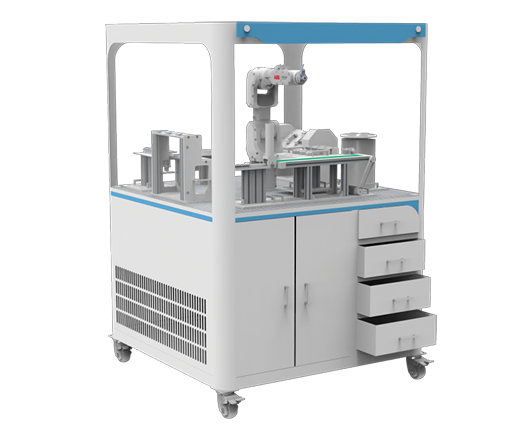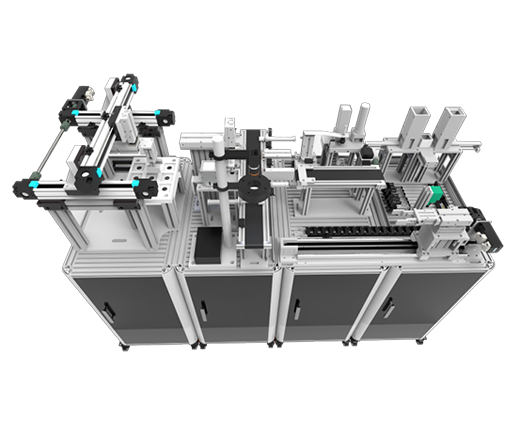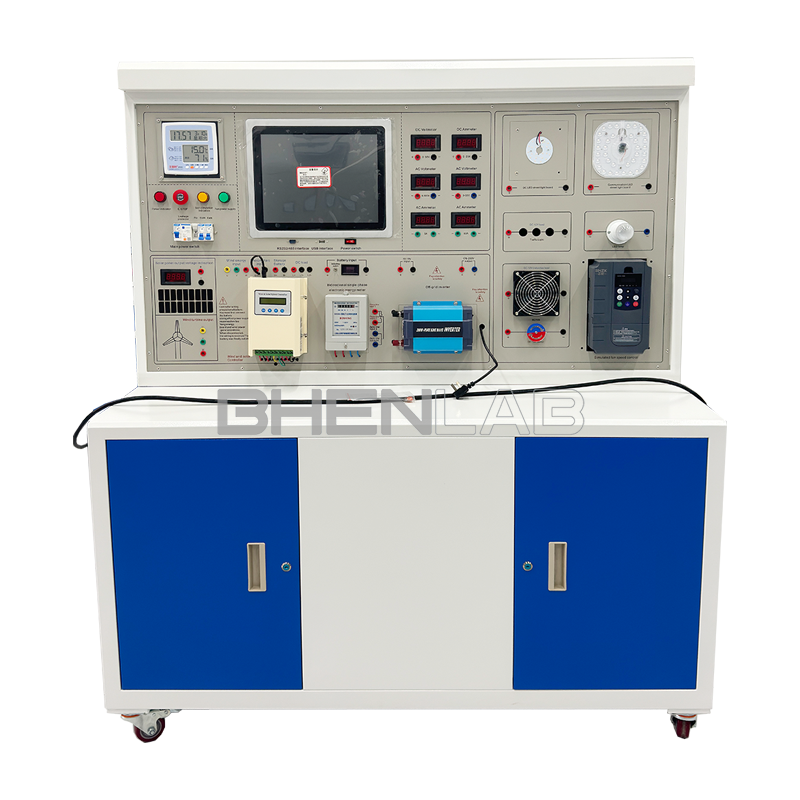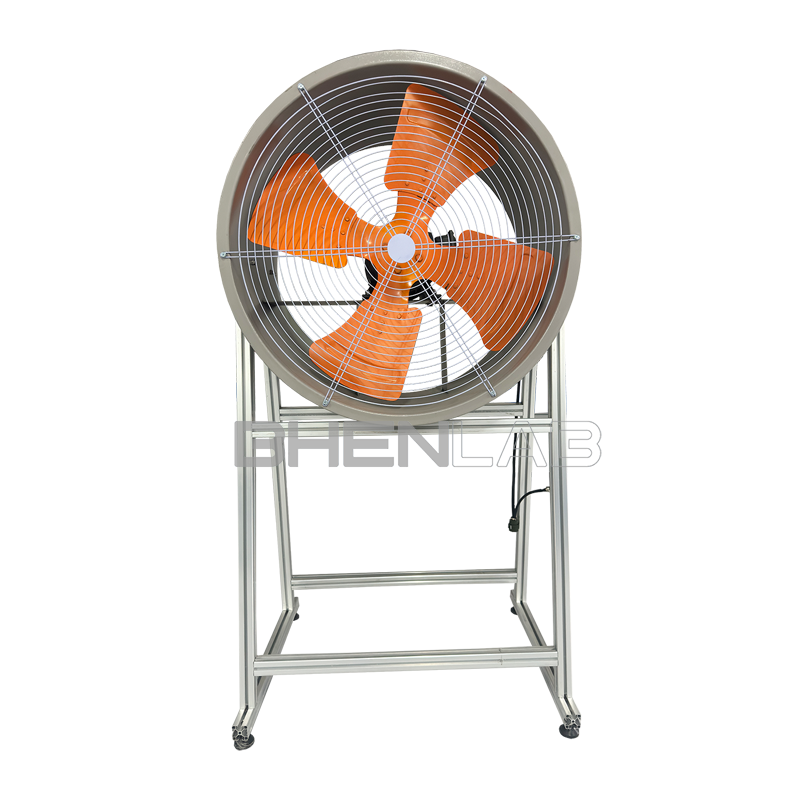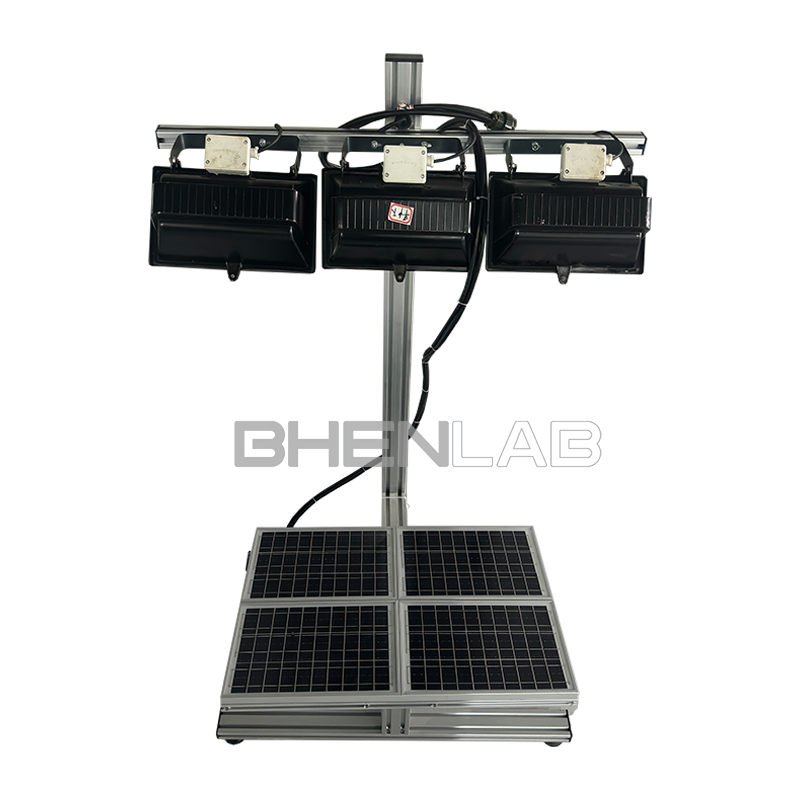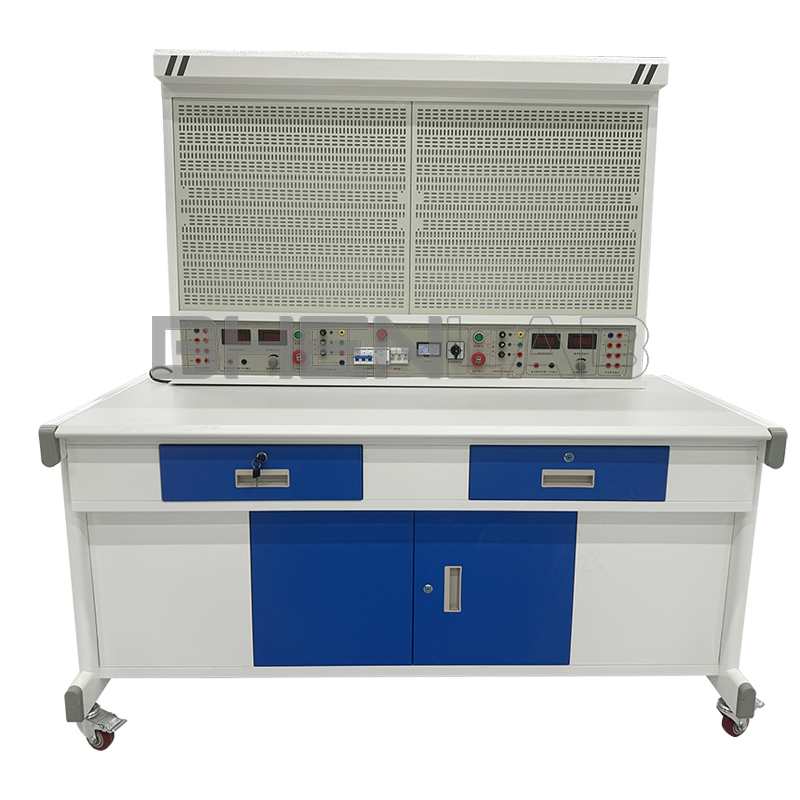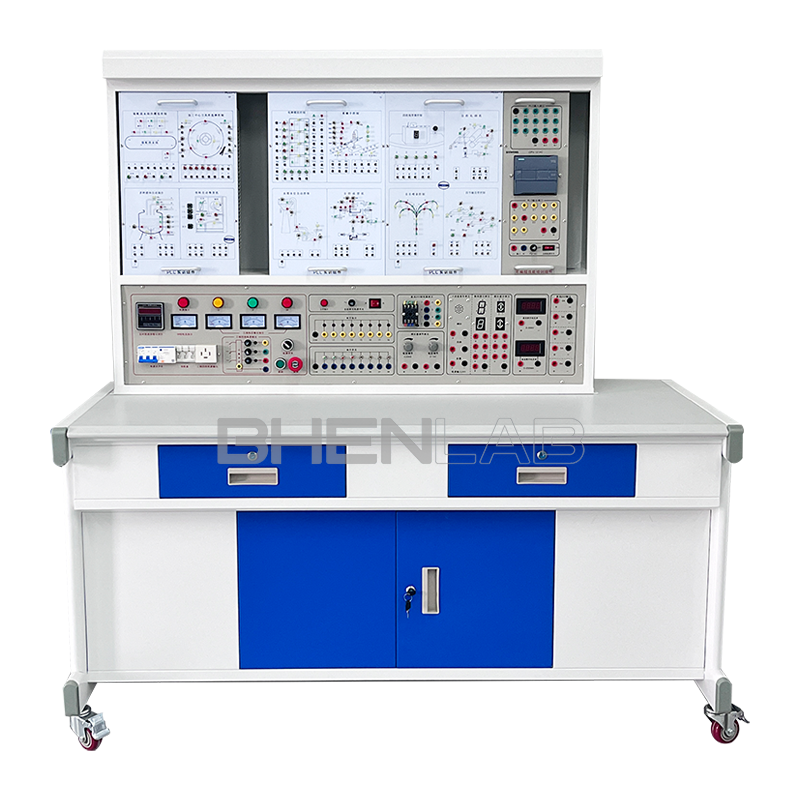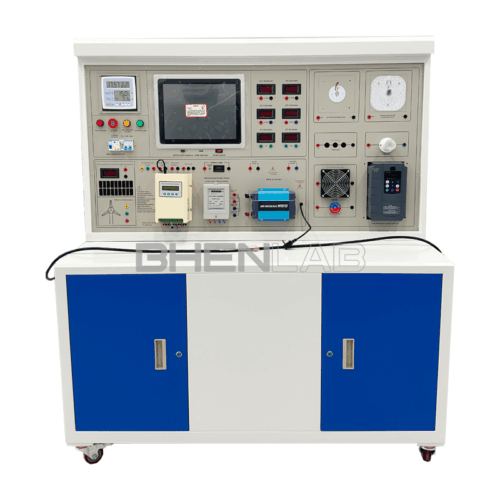
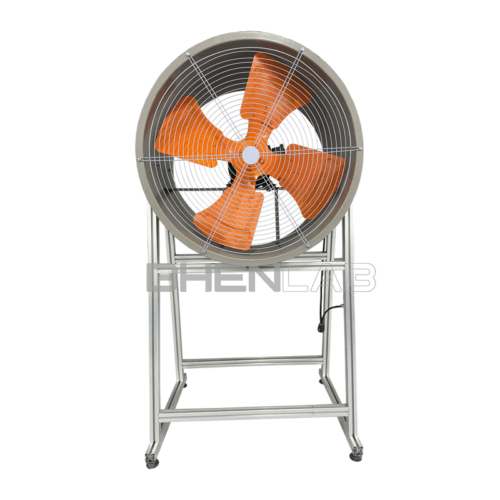
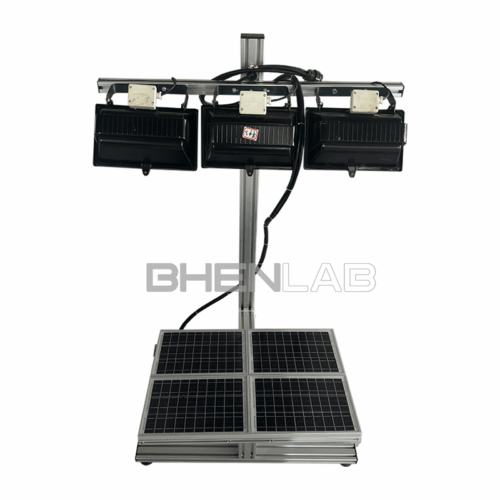
Main Features of the Product
The wind-solar hybrid power generation system is mainly composed of wind turbine generator sets, solar photovoltaic modules, controllers, batteries, inverters, AC and DC loads, etc. It is a composite renewable energy power generation system that integrates multiple energy generation technologies such as wind energy, solar energy, and batteries, as well as intelligent system control technology.
I. Wind Vane, Wind Turbine and Support System
400W, starting wind speed 3.14m/s; rated wind speed 13m/s; yaw wind speed 5m/s; maximum design wind speed 15m/s; transmission mode: wind wheel directly drives the generator; temperature range: -40~60℃.
II. Solar Panels, Simulated Light Source and Control System
Solar panels are assembled in an array form, mainly using 4 (or more) small solar panels, which can realize the parallel and series connection modes of solar panels, thus providing two solar panel networking modes with large current or high voltage.
Maximum output power: 4*10W
Simulated sun: 300W, adjustable distance: 0~80cm
III. Wind Source Simulation and Control
Wind source simulation; industrial axial flow fan: power 3000W, axial flow fan, using a speed-adjustable controller, wind speed adjustment range: 0~13m/s; wind speed control accuracy: 0.1m/s; wind direction control accuracy: 0.1 degree.
IV. Wind-Solar Hybrid Controller
Power electronic modules: voltage stabilization module, control module, inverter module; control panel: wind speed and direction control panel, data display panel, control system.
V. Load Part, Battery Expansion Function
1. Five groups of DC24V DC loads (3 groups of inductive loads, 2 groups of resistive loads)
1) Inductive loads include: 24V DC fan, 24V DC motor, 24V buzzer
2) Resistive loads include: 24V traffic light, 3W LED light
2. Four groups of AC220V AC loads (1 group of inductive loads, 3 groups of resistive loads)
1) Inductive loads include: 220V DC fan
2) Resistive loads include: 220V traffic light, 220V 3W LED light, 220V 28W LED light
3. Adjustable constant voltage and constant current regulated power supply with 0-30V and 0-5A
4. Technical parameters of the adjustable resistance box are as follows:
1) Resistance range: 10 ohms – 99.99K
2) Error range: ±1%
3) Current range: ≤500ma
5. USB interface voltage output: can provide 5V DC regulated power supply for electronic devices
6. Electronic load (optional)
VI. Battery capacity is at least 10Ah, voltage 24V
VII. The touch LCD data acquisition and display module mainly includes
1. It can respectively monitor and display various parameters (current, voltage, temperature, humidity, illuminance, wind speed, wind direction, electricity quantity of wind power generation, etc.) in the solar cell module, controller module, and inverter module in real time, with an alarm prompt function
2. Solar controller (with alarm function): data display and dynamic curve display of input voltage, current, and power
3. Data display and dynamic curve display of output voltage, current, and power
4. Single inverter: data display and dynamic curve display of output voltage, current, power, and electricity consumption; output frequency display
5. Battery: voltage data display and dynamic curve display
6. Environmental monitoring: temperature, humidity, and illuminance display
7. Thermometer interface display, hygrometer interface display
8. Dynamic curve display of light intensity, automatic range switching: 225Lx, 2250Lx, 22500Lx, and 225KLx (225000Lx)
VIII. Can be equipped with a host computer monitoring system for real-time monitoring
IX. The whole structure is designed with industrial aluminum profiles and double-sided white high-density boards
X. The product panel is made of epoxy resin panel to prevent long-term deformation.
(II) Experimental projects that can be completed:
Experiment 1: Basic theoretical principle experiment of wind power generation
Experiment 2: Wind power generation system design experiment
Experiment 3: Simulation experiment of basic theory and application technology of wind power generation
Experiment 4: Experiment on measurement technology related to wind power generation
Experiment 5: Experiment on wind power generation control technology
Experiment 6: Basic theory experiment of solar energy
Experiment 7: Experiment on basic theory and application technology of solar power generation
Experiment 8: Measurement technology experiment of solar and wind power generation
Experiment 9: Experiment on solar power generation control technology
Experiment 10: Wind-solar hybrid power generation experiment
Experiment 11: Solar cell photovoltaic energy conversion experiment
Experiment 12: Experiment on the influence of environment on photovoltaic conversion
Experiment 13: Direct load experiment of solar cells
Experiment 14: Experiment on the working principle of wind-solar hybrid controller
Experiment 15: Overcharge protection experiment of wind-solar hybrid controller
Experiment 16: Over-discharge protection experiment of wind-solar hybrid controller
Experiment 17: Experiment on three output modes of wind-solar hybrid controller
Experiment 18: Low-voltage protection experiment of inverter
Experiment 19: Overvoltage protection experiment of inverter
Experiment 20: Inverter output experiment


